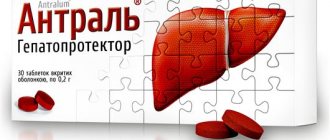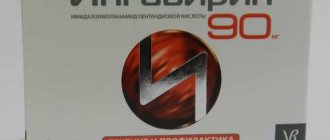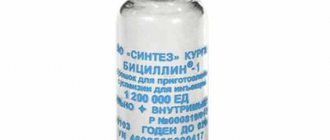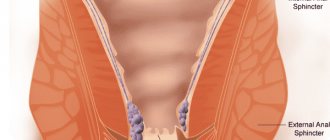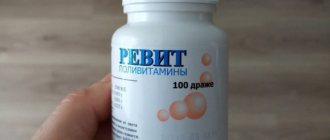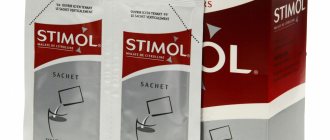Medicine form
cream for external use.
Tube: 15 or 30 g.
The active ingredients of the drug are: clotrimazole, beclomethasone dipropionate and gentamicin sulfate. The composition also contains the following components:
- Medical Vaseline.
- Propylene glycol.
- Benzyl alcohol.
- Liquid paraffin.
- Cetomacrogol.
- Sodium dihydrogen phosphate.
- Sodium hydrogen phosphate.
- Methyl parahydroxybenzoate.
- Purified water.
Candiderm is produced in the form of a cream. It is produced in a tube, the volume of which is 15 and 30 grams.
Main physical and chemical properties: solid, uniform cream of white color.
Pharmacological properties
Candiderm ointment relieves itching, redness and irritation of the skin
Candiderm ointment has antimicrobial, anti-inflammatory and antiallergic properties. Beclomethasone, contained in the composition, relieves itching, irritation and redness of the skin. The action is due to the fact that the substance inhibits the accumulation of leukocytes in the blood. It prevents the appearance of swelling, reducing vascular tissue permeability.
Gentamicin is an antibiotic and has a pronounced bactericidal effect. The substance inhibits the vital activity of pathogenic microorganisms.
Clotrimazole has an antifungal effect, which is achieved by destroying the fungal membrane.
Monitoring pharmacodynamics is difficult, since the drug has a combined composition.
Contraindications
- eczema;
- dermatosis with the addition of a secondary bacterial infection;
- dermatomycosis, including damage to the external genitalia;
- allergic dermatosis;
- atopic dermatitis;
- lichen planus;
- diffuse form of neurodermatitis;
- phlebotoderma;
- itching, allergies caused by insect bites.
- lupus;
- rosacea;
- chicken pox;
- herpes simplex;
- skin symptoms of syphilis;
- pregnancy;
- lactation;
- children under 7 years of age;
- presence of wounds and burns on the skin;
- the presence of post-vaccination skin reactions;
- individual intolerance to the composition.
To eliminate dermatitis, diseases caused by fungi and bacterial infections, doctors prescribe Candiderm - the instructions for use contain information about the dose of the drug, side effects and contraindications. The medicine has a wide spectrum of action and is used externally. Read the instructions.
A drug with antifungal, anti-inflammatory and antibacterial effects, Candiderm contains a complex of active substances (beclomethasone dipropionate anhydrous, clotrimazole, gentamicin sulfate).
According to the classification adopted in pharmacology, the medication belongs to combined drugs that additionally have an antiallergic effect.
The drug can be used by adults and children over seven years of age to suppress pathogenic microflora.
| Substance | Concentration, mg per 1 g |
| Beclomethasone dipropionate | 0,25 |
| Clotrimazole | 10 |
| Gentamicin sulfate form | 1 |
| Auxiliary components | Propylene glycol, petrolatum, cetomacrogol, liquid paraffin, methylparaben, propylparaben, benzyl alcohol, water, butylated hydroxytoluene, sodium dihydrogen phosphate monohydrate and hydrogen phosphate |
The instructions contain information about contraindications for which the use of Candiderm is prohibited:
- lupus;
- skin manifestations of syphilis;
- chicken pox;
- plaque psoriasis;
- phlebeurysm;
- measles;
- skin ulcers;
- shingles;
- defeat by herpes simplex;
- post-vaccination skin reactions;
- age up to seven years;
- pregnancy;
- application to open wounds;
- hypersensitivity to components.
Candiderm ointment will help cure cockroach bites.
Candiderm cream is recommended in the following cases:
- Dermatitis caused by an insect bite.
- Ringworm flat type.
- Dermatomycosis localized in any area (including the groin).
- Athlete's foot.
- Dermatosis caused by an allergic reaction.
- Diffuse form of neurodermatitis.
- Eczema.
- Atopic dermatitis.
- Secondarily infected dermatoses.
- Phlebotoderma.
Allergy after vaccination is a contraindication to the use of Candiderm
The use of Candiderm cream is prohibited under the following conditions:
- Syphilis, manifested by skin rashes.
- Hypersensitivity to substances included in the drug.
- In areas where the integrity of the skin is damaged.
- Simple herpes.
- Skin reactions after vaccination.
- Chicken pox.
It is also prohibited to use in children under 7 years of age.
Many people experience various types of skin diseases. To get rid of unpleasant symptoms, medications in the form of creams and ointments are usually used. A multi-component product that has a versatile therapeutic effect is Candiderm cream. Let's take a closer look at the composition, indications for use and features of the medicine.
Candiderm is fully compatible with any other medications. To achieve the best results from such therapy, it is best to temporarily stop using cosmetics with surfactants. The use of Candiderm analogues and the medicine itself is not recommended for:
- skin tuberculosis;
- herpes, chicken pox, cutaneous syphilis;
- pregnancy and breastfeeding;
- open wounds;
- increased sensitivity;
- allergic reaction;
- recent vaccination.
Indications for use of the cream
are: dermatoses complicated by secondary infection; athlete's foot; dermatomycosis (including localized in the groin area) caused by pathogens sensitive to the drug.
Contraindications to the use of cream
https://www.youtube.com/watch?v=Tk2kMmHU_vc
are: hypersensitivity to the components of the drug; lupus; skin manifestations of syphilis; chicken pox; herpes simplex; skin reactions after vaccination; open wounds; pregnancy; lactation period; children's age up to 7 years.
Candiderm or Akriderm ointment?
A group of drugs for external use Akriderm, the active component of which is the glucocorticosteroid hormone betamethasone, has a powerful anti-inflammatory and antiallergic effect. Akriderm ointments and creams are effective for stopping all types of severe inflammatory processes on the epidermis. Akriderm is used in the treatment of acute, chronic and subacute skin diseases, which are based on the inflammatory process (dermatoses).
There are four varieties of Akriderm available: Akriderm - ointment and cream, Akriderm Genta - ointment and cream, Akriderm GK - ointment and cream, Akriderm SK - ointment.
All types of Akriderm include the main components also found in Candiderm cream - Betamethasone and Gentamicin. Salicylic acid, which is part of Akriderm SK in combination with betamethasone, is a keratolytic.
The product helps exfoliate dead cells of the upper layer of skin. Since many skin diseases are accompanied by hyperkeratosis, that is, its thickening and roughening, the use of a keratolytic helps remove excess dead keratinized cells, allowing the pathological condition to be eliminated. Akriderm SK ointment is a strong anti-inflammatory and antiallergic drug and in addition to this has a keratolytic effect. Akriderm SK is used for severe inflammation or allergies in areas of the skin with hyperkeratosis.
Each type of Akriderm has a specific direction of action:
- Akriderm is used for severe inflammation or allergic reactions on the skin;
- Akriderm Genta is effective for severe inflammation or an allergic reaction to the skin in combination with a bacterial infection;
- Akriderm GK is prescribed for inflammation or allergic reactions on the skin in combination with a fungal infection;
- Akriderm SK is used in the presence of a pronounced inflammatory process or an allergic reaction in certain areas of the skin with hyperkeratosis.
The advantage of the drug Akriderm is that you can choose the most suitable one from the existing types of the drug, depending on the characteristics of the course of the disease, and use it for specific skin inflammatory pathologies. Akriderm cream and ointment are approved for use in pediatrics for the treatment of diaper dermatitis. The drug is also used to treat senile itching in elderly patients.
Mode of application
According to the instructions, Candiderm cream is applied in a thin layer to the affected areas of the skin twice a day (morning and evening, preferably at the same time). The duration of treatment depends on the severity of the effect and tolerability of the drug, the maximum course lasts 2-4 weeks. Children aged 7-16 years should use Candiderm strictly according to indications, in the presence of medical supervision.
Candiderm cream, analogues of which are also highly effective, is intended for external use. To treat mycosis, it must be applied to the affected area of the skin twice a day for 2-4 weeks. Before using the drug, it is necessary to cleanse the skin of accumulated dirt.
Analogs
If necessary, Candiderm cream can be replaced with analogues. The choice of a replacement drug must be made by a specialist, since all drugs differ in composition and may only be acceptable for use in a specific pathology.
- Lamisil ointment. The active component of the drug is terbinafine. It is allowed to use the ointment for the treatment of both adults and children (up to 2 years). Apply a thin layer of it 2 times a day to the affected skin for 20 days.
- Cream Candide. The active component of the cream is clotrimazole. The substance destroys the protective shells of the fungal membrane, as a result of which the pathogenic microorganism dies. Candide is used for inguinal fungal infections, tinea versicolor, fungal diseases of the feet and hands. The course of treatment with Candida is 3 weeks. Apply the cream twice a day.
- Nizoral cream. The drug with the active component clotrimazole is applied to the area affected by the fungal infection 2 times a day until the symptoms of the disease completely disappear. The drug allows you to relieve itching and restore the skin. After recovery, it is recommended to use the cream for another 20 days to prevent the growth of fungal cells and prevent relapse. The cream is not allowed to be used to treat children under 3 years of age, during pregnancy and lactation, or with liver diseases.
- Belogent. The drug has anti-inflammatory, antiallergic and antibacterial effects. The active ingredients are betamethasone and gentamicin. The drug is effective for psoriasis, can be used in children under 1 year of age, and rarely causes adverse reactions. The product belongs to hormonal drugs; use is not allowed for skin tuberculosis, during pregnancy and lactation.
Analogues of Candiderm cream also include:
- Orungal. A broad-spectrum antifungal drug, a triazole derivative. Inhibits the synthesis of ergosterol in the cell membrane of fungi, causing the death of the pathogenic microorganism.
- Flucostat. The drug belongs to the triazole group (not an antibiotic). Selectively affects fungal pathogens. Widely used to treat fungal infections that are caused by yeast or yeast-like fungi.
- Mikospor. The active substance is micronized bifonazole 1 g. The active component of the drug is an imidazole derivative and has a broad antifungal spectrum of action.
- Kanizon. The drug is intended for local therapy and has an effective antifungal effect. The drug is recommended for various diseases of the epidermis caused by fungal etiology.
Contraindicated
Candiderm is used for local application in infectious-inflammatory and allergic skin diseases accompanied by a secondary bacterial or fungal infection.
Increased sensitivity to active substances, other imidazoles or any other components of the drug. Tuberculosis of the skin, skin manifestations of syphilis, skin reactions after vaccination, enlarged plaque psoriasis, varicose veins, perioral dermatitis, erysipelas, chickenpox, herpes simplex, cysts, other bacterial and fungal infections of the skin without adequate antibacterial and antifungal therapy, juvenile acne, primary skin viral infections, varicose veins and other types of varicose veins, caused by stasis of another genesis, ringworm, impetigo, perianal and genital itching.
Side effects
In some cases, the ointment may cause side effects. This is usually due to ignoring the rules from the instructions for use of Candiderm. In rare cases, after applying the product, a person begins to experience a burning sensation, dryness, peeling and swelling, a rash (urticaria or prickly heat), and steroid acne. Allergic dermatitis occurs much less frequently, which significantly complicates the treatment process.
With prolonged use of the drug, the function of the adrenal cortex may be inhibited in the patient. Also, when treating large areas of the skin, the hypothalamic-pituitary system may be suppressed, and hypercortisolism may develop.
In rare cases, intracranial pressure increases and the production of growth hormone decreases. Thanks to the correctly selected composition, such consequences after use occur extremely rarely.
The formation of stretch marks on the skin with prolonged use of Candiderm cream.
Side effects in most cases occur with prolonged use of Candiderm cream. When used correctly, they appear rarely and are mild in nature. Possible negative reactions include the following:
- Allergic reactions, manifested by urticaria, contact dermatitis and swelling.
- Formation of stretch marks on the skin.
- Atrophic skin changes.
- Folliculitis.
- Prickly heat.
- Hypertrichosis.
- The appearance of a burning sensation and irritation.
- Peeling of the skin.
- Perioral dermatitis.
- Maceration.
- Increased dryness of the skin.
- Pyoderma.
- Furunculosis.
In severe cases, long-term therapy may suppress the adrenal cortex. In this case, treatment with the drug is immediately canceled. In most cases, side effects are manifested by reactions on the skin. After discontinuation of the drug, side effects go away on their own and do not require additional treatment.
Burning sensation, hyperemia, erythema, peeling, swelling, dryness, maceration and atrophy of the skin; striae, hypertrichosis, folliculitis, miliaria, urticaria, steroid acne, perioral dermatitis, allergic contact dermatitis, telangiectasia, hypopigmentation, pyoderma, furunculosis.
With long-term use, systemic side effects are possible, incl. suppression of the function of the adrenal cortex.
If the instructions are strictly followed, Candiderm cream causes virtually no side effects, and all reactions that occur are mild and temporary. Some patients may experience:
- allergies – contact dermatitis, urticaria, swelling;
- atrophic skin changes;
- hyperemia;
- hypertrichosis;
- perioral dermatitis;
- folliculitis;
- prickly heat;
- furunculosis;
- hypopigmentation;
- pyoderma;
- maceration;
- peeling of the skin;
- striae;
- burning sensation.
The instructions indicate possible side effects during therapy with Candiderm cream:
- burning, swelling, redness, peeling, dry skin;
- erythema, maceration, skin atrophy, the appearance of stretch marks (striae), hypertrichosis, telangiectasia;
- folliculitis, prickly heat, steroid acne, dermatitis near the mouth, hypopigmentation, allergies;
- furunculosis, pyoderma, urticaria;
- allergic contact dermatitis;
- with long-term use, suppression of the adrenal cortex, impaired growth of the child, dysfunction of the hypothalamus and pituitary gland are possible.
Reviews
Irina Nikolaevna, 38 years old, Krasnodar:
I suffered with foot fungus for almost six months. I tried many remedies that are constantly advertised, and also resorted to traditional medicine methods. When I realized that I was making things worse for myself, I went to a dermatologist. The doctor prescribed me vitamins to strengthen my immune system and Candiderm cream. I applied it to my feet 3 times a day and after 5 days I already noticed the first results.
After two weeks, not a trace of the fungus remained. Now I use it 2-3 times a month for preventive purposes. Volume 30 g. It lasted me 14 days of use.
Sergey Petrovich, 49 years old, Moscow:
My daughter used Candiderm for cutaneous mycosis. I applied it every day for about a month on my back and arms, where there were rough spots. There was no result for quite a long time, and then all traces quickly disappeared. An excellent product and costs much less than advanced branded drugs. We recommend it to everyone!
Interactions with other medicinal drugs and other types of interactions
There is no information on the interaction of clotrimazole, beclomethasone dipropionate and gentamicin sulfate with other drugs. The fragments are systemically absorbed minimally, the interaction of the drug with concomitant medications systemic action is low.
Laboratory studies have shown that clotrimazole may interfere with latex contraceptives when administered overnight. The effectiveness of such contraceptive methods may then be reduced. Patients should use alternative methods of contraception for at least five days after taking Candiderm.
Drug interactions
There is no information regarding the interactions of the combination of clotrimazole, beclomethasone dipropionate and gentamicin sulfate with other drugs.
Since systemic absorption is minimal, drug interactions
with concomitant systemic drugs is unlikely.
Laboratory studies have shown that clotrimazole may cause damage to latex contraceptives when used concomitantly.
So the effectiveness of such contraceptives may be reduced. Patients should use alternative methods of contraception for at least five days after using Candiderm.
The instructions for use contain information about the absence of a negative effect when combining Candiderm with other medications. It is possible to develop cross-resistance with other aminoglycoside antibiotics. Theoretically, a violation of the pharmacokinetics of the cream may occur due to drug interaction with cosmetics and medications containing surfactants.
When Candiderm is used simultaneously with aminoglycoside antibiotics, cross-resistance may develop. No interactions with other medications were identified.
When using Candiderm with aminoglycoside antibiotics, the development of cross-resistance (resistance) of bacteria and increased side effects are possible. Other drug interactions with the cream are not indicated in the instructions.
special instructions
Occlusive dressing enhances the effect of the ointment
To achieve maximum effect, you must follow special instructions for using Candiderm cream. These include the following:
- If resistant fungal and bacterial microflora appear, stop using the cream and begin appropriate therapy.
- Avoid contact of the drug with the eyes. If this happens, your eyes should be rinsed thoroughly.
- In some cases, the cream is applied under occlusive dressings. It is worth considering that with this method of use the likelihood of side effects increases significantly. This is due to increased absorption of gentamicin and beclomethasone.
Method of congestion and dosage
The drug is used for consolidation only in dermatological practice, but not for consolidation in ophthalmology. Application of the drug to the eyes or eyelids can lead to glaucoma.
Excessive use of the drug can lead to an extreme growth of insensitive microorganisms. For which type of treatment should be followed and followed by the following types of treatment. In case of development of infection, sensitization or superinfection on aphids, treatment with the drug should be administered and appropriate therapy should be prescribed.
Systemic absorption of beclomethasone dipropionate and gentamicin may increase when the drug is cured on large sections of the skin, especially when applied to the skin, baked or covered with granulation tissue skin, or when cured no occlusive dressings. In such cases, side effects may occur after systemic stagnation of active substances.
In connection with this, it is necessary not to put the drug on open wounds or hardened areas of the skin, and do not put Candiderm under occlusive dressings.
Any side effects that occur with stagnation of systemic corticosteroids, including suppression of the function of the measles of the supraneural glands, Cushing's syndrome and shifts in the intracranial pressure, may also occur with muscular stasis baths of glucocorticosteroids. It is necessary to avoid prolonged stagnation through the possible suppression of the function of the measles of the epithelium, without stagnation of occlusive dressings.
The face, more than other parts of the body, may experience atrophic changes after prolonged depletion of local corticosteroids.
Beware of over-allergic reactions with aminoglycosides. In such situations, the following precautions must be taken.
Muscular corticosteroids may not be safe in psoriasis for a number of reasons, including relapse, development of tolerance, risk of development of generalized pustular psoriasis, and development of local or systemic toxicity following damage to the bar. The main functions of the skin. Since the drug is used for psoriasis, careful observation of the patient’s body is more important.
To treat bacterial infections that can lead to inflammation of the skin, similar antimicrobial therapy may be used. Whether common infections are supported by topical corticosteroid therapy and systemic administration of antibacterial agents.
Overdose
An overdose of Candiderm ointment is an extremely rare occurrence. If the drug is used irrationally, a person may experience hypokalemia, weight gain, hypertension, glucosuric syndrome due to disruption of the adrenal glands. When the first symptoms of such disorders appear, you should immediately consult a doctor to prescribe specific therapy.
Symptoms of an overdose of Candiderm are: weight gain, edema, sharply developing arterial hypertension (increased blood pressure), glucosuria. Possible manifestations of hypokalemia and hypercortisolism. Treatment is gradual withdrawal of the drug, taking maintenance medications, and in severe cases, administration of electrolytes to correct water balance.
If you deviate from the instructions or use the cream for an excessively long time, your blood pressure may increase and symptoms of hypokalemia, glucosuria, and hypercortisolism may appear. Treatment of overdose consists of discontinuing the ointment and carefully correcting the electrolyte balance.
Symptoms of hypercortisolism may develop - weight gain, edema formation, hypertension, glucosuria, hypokalemia.
Treatment: symptomatic therapy, if necessary, correction of electrolyte balance. Gradual withdrawal of the drug is recommended.
Use in children, pregnancy and lactation
The use of Candiderm cream is not recommended during pregnancy
Use in childhood, from 7 to 16 years, can be prescribed if necessary, but only under the supervision of a physician. The drug is used according to the standard regimen. Infected areas of the skin are treated morning and evening, in no case more than 2 times a day.
When treating children, it is prohibited to apply the cream to large areas of the skin, as this significantly increases the likelihood of developing side effects. In childhood, there is a risk of increased intracranial pressure.
The use of Candiderm cream is strictly not recommended during pregnancy and breastfeeding. The product can only be used as prescribed by a doctor, therapy should be carried out under the strict supervision of a specialist. Prescription is possible if the expected benefits outweigh the risks. If any side effects occur, stop using the cream.
Terms of sale and storage
Store in a dry place, protected from light, at a temperature not exceeding 25 ° C.
Keep out of the reach of children.
Candiderm is available from pharmacies without a prescription. Tubes are allowed to be stored for 3 years. The instructions also indicate that the optimal temperature is 25 °C. Freezing or strong cooling of the ointment is unacceptable.
Candiderm can be bought without a prescription; it is stored away from light and children at temperatures up to 25 degrees for three years. It is forbidden to freeze packages.
Overdose
Avoid overdosing in case of local stagnation of Candiderma with low virulence. However, local stagnation on large sections of the skin can lead to systemic absorption of beclomethasone and gentamicin. With persistent or severe stagnation, there is a possibility of suppression of the pituitary-adrenal function with the development of secondary adrenal insufficiency and the appearance of symptoms of hypercortisolism, including Cushing’s disease, possible hypercortisolism Early growth of microorganisms insensitive to antibiotics.
Likuvannya. Prescribe appropriate symptomatic therapy. Symptoms of acute hypercortisolism are called werewolves. If necessary, correct the electrolyte balance. In cases of chronic toxicity, it is recommended to supplement with corticosteroids. In case of excessive growth of resistant microorganisms, it is recommended to treat with the drug and institute unnecessary therapy.
Candiderm: instructions for use, price, reviews, analogues, composition
When faced with allergic reactions and inflammations on the skin, you need to choose an effective drug, which includes Candiderm ointment from an Indian manufacturer.
The drug is available in only one form - ointment. In appearance, Candiderm is a white, homogeneous substance with a characteristic odor. The drug is produced in aluminum tubes of 15 or 30 grams. One cardboard package contains 1 tube and instructions for use of the product.
| Substance | Concentration, mg |
| beclomethasone dipropionate | 0.25 mg |
| clotrimazole | 10 |
| gentamicin sulfate | 1 |
| Additional components: | propylene glycol, petroleum jelly, benzyl alcohol, sodium dihydrogen phosphate monohydrate, purified water, sodium hydrogen phosphate, propylparaben, methylparaben, liquid paraffin, butylated hydroxytoluene. |
contains active ingredients: clotrimazole 10 mg, beclomethasone dipropionate 0.25 mg, gentamicin (as sulfate) 1 mg.
Excipients: propylene glycol; cetomacrogol; petrolatum; liquid paraffin; benzyl alcohol; methyl parahydroxybenzoate (methylparaben); propyl parahydroxybenzoate (propylparaben); butylated hydroxytoluene; sodium dihydrogen phosphate monohydrate; sodium hydrogen phosphate; purified water.

